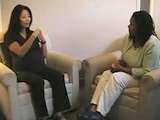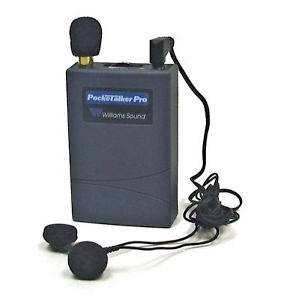
 The First Case Study
The First Case Study
Avoiding Assumptions
Scenario 1 – Arranging for Access
DeShaun is a relatively new client for you. When assigned to your case load, you learned DeShaun was deaf and you assumed that you would need a sign language interpreter. You requested an interpreter through the appropriate channels, and learned that one was not available for the time of your appointment. When you emailed DeShaun to re-schedule, he emailed back that he was fine meeting without an interpreter. During this appointment, he communicated with you in spoken English and used lipreading. From your perspetive, the appointment went well and communication was just fine.
The next week you needed to schedule a team meeting for DeShaun and did so. Since the meeting the previous week had gone so well, you did not even request an interpreter. When DeShaun arrived, he was upset that no sign language interpreter was present and demanded that the meeting be re-scheduled.
This change in needs for communication left you confused and puzzled. In addition, your colleagues who you had scheduled to meet left feeling frustrated.
What was going on? What can we learn from this?
Learning from the First Case Study
This first experience illustrates an important point: communication needs are dynamic and change based on the people involved and the situation. DeShaun is someone who feels comfortable communicating without an interpreter in a situation where it is a one-on-one dialogue. Such a communication allows for a lot more control for a person with hearing loss to take part in the conversation. First, he would not have to keep track of who is talking. Second, there would be more opportunities for asking for clarification.
In a group setting, with people who might not have experience with communicating with someone who is deaf, DeShaun might have a much more difficult time following who is speaking. If he depends on reading lips, he might have a harder time having a good angle to see the speaker, and there might be less of a chance for him to ask questions of clarification.
What is to be learned? It is that there is a danger in assuming that you know what is the best method of communicating for a given client in a given situation. It demonstrates a degree of respect for the client to ask him or her what would work best in any given situation.
TIP #1: ASK THE CLIENT WHAT WORKS BEST FOR COMMUNICATION.
People who have a hearing loss are diverse and may have different needs for accommodations. The best option is to ask the client what works best for them in a specific situation.
TIP #2: RECOGNIZE THE DIVERSITY OF PEOPLE WITH HEARING LOSSES.
(Note that within this Tip, there are numerous links that you can use to expand your learning.) Factors to consider include:
- DIVERSITY OF IDENTITIES: people may use a variety of terms to identify themselves. The following list explains a few of the more common ones.
- Deaf: Having a hearing loss of such severity that communication and learning is primarily by visual methods i.e. manual communication such as American Sign Language (ASL), writing, speechreading, and gestures.
- DeafBlind: Having a dual sensory loss that interferes with the ability of a person to function effectively in the “hearing-sighted” world. This term does not necessarily mean total lack of hearing and vision.
- Hard of hearing: Having some degree of hearing loss ranging from mild to profound. People who are hard of hearing may benefit from the use of hearing aids or other assistive listening devices. They depend primarily upon spoken English in communicating with others.
- Late deafened: Having a severe to profound hearing loss, which occurred after the development of speech and language. People who are late deafened can benefit from the use of visual display technology, but usually very little from hearing aids or listening technology.
- Outdated terms: these are considered offensive by many people in the Deaf community.
- Deaf-mute
- Hearing-impaired
TIP #3: UNDERSTAND THAT THERE ARE A VARIETY OF METHODS FOR COMMUNICATION.
- WAYS OF COMMUNICATING: People use a variety of methods to communicate. Some examples include:
- Interpreters
- English ~ American Sign Language interpreters
- Oral Interpreters
- Tactile or Close-Vision Interpreters
- Captioning and CART (Communiciation Access Reatime Translation) (Including apps that allow for remote services)
- Video Remote Interpreters (VRI)/Video Relay Services (VRS)

- Assistive Listening Devices
- Hearing aids
- FM systems & Pocket Talkers


- Cochlear implants

- Amplifiers for telephones
- Lipreading/Speechreading
- Written notes (See tips below)

Ubiduo Face-to-Face communicator
- Can be done on a computer or paper
- Captioning of Educational Videos or Presentations
- Deaf Community Health Workers
- Interpreters
In the following case studies, we will look more closely at what these different accommodations are and what they might mean for providing client-centered services.
Tips for Written Communication
Tips for Written Communication
Always ask a Deaf person if they prefer written communication. Do not assume that this is the preferred method. When using writing as a form of communication with Deaf people, take into consideration their English and writing skills.
Keep your message short and simple. Establish the subject area, avoid assumptions, and make your sentence concise.
It is not necessary to write out every word. Short phrases or a few words often are sufficient to transfer the information.
Face the Deaf person after you have written your message. If you can see each other’s facial expressions, communication will be easier and more accurate.
Use visual representations if you are explaining specific or technical vocabulary to a Deaf person. Drawings, diagrams, etc., help the person comprehend the information.

